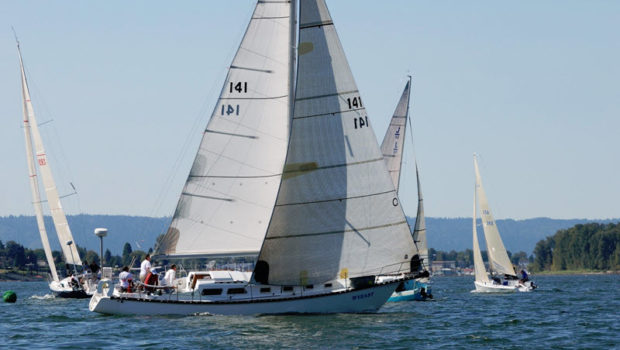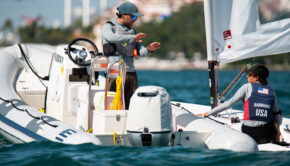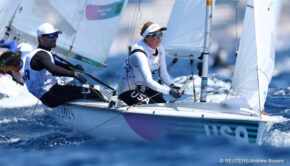Why PHRF is Suffering – Part 2
Published on April 5th, 2017
A strong sport has critical entry points to foster growth, and PHRF has been that gateway to introduce casual keelboat sailors to competition. Its simplicity is its attraction but factors are impacting participation. Bruce Bingman, chair of the US PHRF committee, offers his observations on recent trends.
There has been a large growth in small keelboat one design racing such as J/70s and Melges 20s. These boats offer speed (as fast as or faster than the old one tonners!), fewer crew, easy dry sailing, and portability that larger PHRF boats do not. When queried about their reasons for switching, most owners have cited time, crew requirements, and expense.
Further, since these boats are providing an excellent entry path into competitive sailing for newer sailors, crews are buying these boats and then are not available to race on the PHRF boats. Great for the future of sailing but not so good for the owner of the Whatchamacallit 40 that needs ten crew to get the boat around the course.
There has also been growth in the larger keelboat one designs like the J/88 and J/111 but this is more than offset by the decline in the Farr 30 and 40 classes across the country.
The majority of the ‘big boat’ racers are recreational sailors. There are maybe 300 or 400 total ‘serious’ big boat programs in the US but there are something like 15,000 PHRF sailors. What we have seen is some drop at the top end but a significant drop in participation in recent years of the mid-level racers.
We know these mid-level racers are still out there as the owners dutifully get certificates each year, but maybe race one or two of their favorite regattas instead of every weekend all season long.
Surveys have produced some answers that range from lack of time on weekends, cost, crew needs, and race format to a lack of comradery (surprisingly complaints regarding ratings were not normally mentioned as a cause of lack of participation). At the bottom of it all seems to be that it just isn’t much fun anymore.
The evolution over the years has been from a single longer race around Government Marks followed by a party where all the competitors and their families discussed the “what if’s” and “if onlys” of the day over a beer (or two), to multiple short drop mark W-L races with maybe a single awards party at the end of the season. This hardly caters to the recreational racer out with their friends and family.
There are a few bright spots – some of the destination distance races are doing well as are many of the weeknight ‘beer can’ races. Note these offer much of what the survey says is missing in the routine weekend race – a short race, usually around Government marks with a big party at the end!
Editor’s note: This is the second of a three part series. Here is Part 1 and Part 3.









 We’ll keep your information safe.
We’ll keep your information safe.